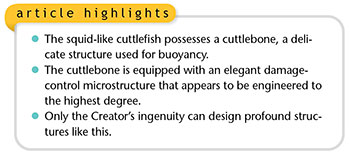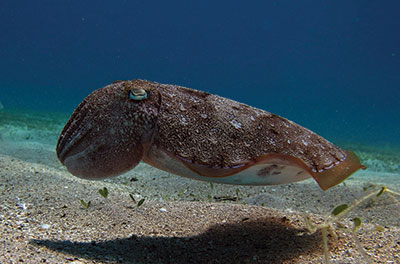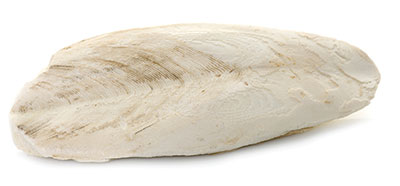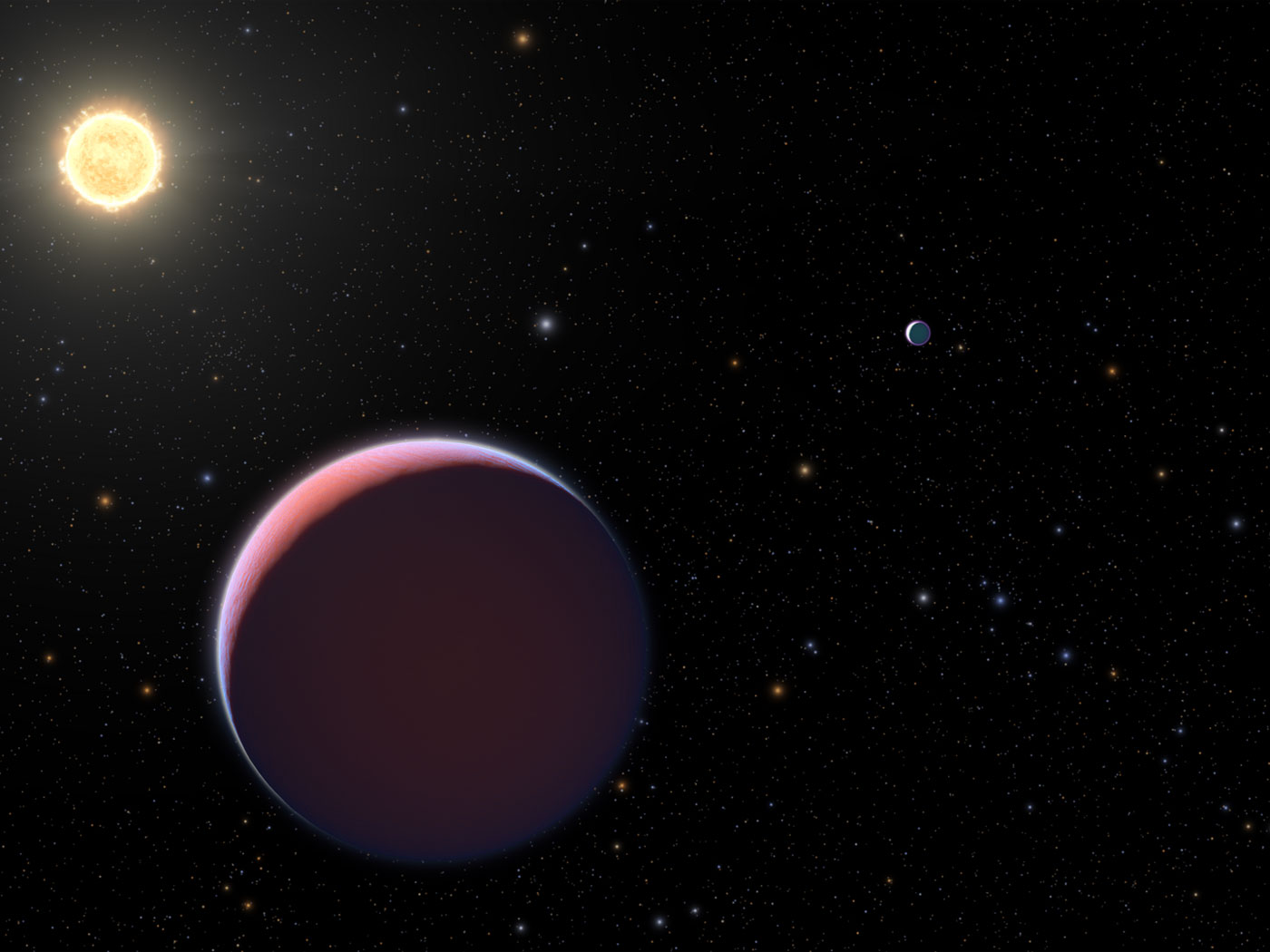 God created Earth during the creation week just thousands of years ago. This includes its marvelous oceans—128 million square miles of salt water. In the 21st century, scientists and laymen alike are struck with the amazing variety of oceanic creatures found at all depths. Some of the most fascinating marine animals are the cephalopods, which include squid, octopus, and cuttlefish. God has designed the cuttlefish (family Sepiidae) with a strange and important structure called the cuttlebone, a brittle, internal shell designed with gas-filled chambers that’s used for buoyancy control.
God created Earth during the creation week just thousands of years ago. This includes its marvelous oceans—128 million square miles of salt water. In the 21st century, scientists and laymen alike are struck with the amazing variety of oceanic creatures found at all depths. Some of the most fascinating marine animals are the cephalopods, which include squid, octopus, and cuttlefish. God has designed the cuttlefish (family Sepiidae) with a strange and important structure called the cuttlebone, a brittle, internal shell designed with gas-filled chambers that’s used for buoyancy control.
You’ve probably seen cuttlebone without recognizing what it was. It’s used as a dietary supplement for pet birds, placed in their cages as an important source of calcium. Zoologists have recently been fascinated by the design of cuttlebone at the microscopic level. The bone is not exactly robust, yet it can tolerate a great deal of damage. A recent Virginia Tech news release spotlighted a study led by mechanical engineering professor Ling Li, who heads the Laboratory for Biological and Bio-Inspired Materials.1 The article stated, “The more Li studies these animals, the more he’s amazed by the uses their bodies find for intrinsically brittle and fragile material. Especially when the use defies that fragility.”2

The design inference of cuttlebone and other biological materials is undeniable.3 Researchers “found that the microstructure’s unique, chambered ‘wall-septa’ design optimizes cuttlebone to be extremely lightweight, stiff, and damage-tolerant.”2 They found that under various magnification techniques—such as powerful X-ray beams—the shell’s microstructure is made up of “wavy walls instead of straight struts. The waviness increases along each wall from floor to ceiling in a ‘waviness gradient.’”2
[The] cuttlebone’s wavy walls induce or control fractures to form at the middle of walls, rather than at floors or ceilings, which would cause the entire structure to collapse. As one chamber undergoes wall fracture and subsequent densification—in which the fractured walls gradually compact in the damaged chamber—the adjacent chamber remains intact until fractured pieces penetrate its floors and ceilings.2
This wall-septa design gives cuttlebone control of where and how damage occurs in the shell. It allows for graceful, rather than catastrophic, failure: when compressed, chambers fail one by one, progressively rather than instantaneously.2

Not surprisingly, evolution is not mentioned in this article. Why should it be? The cuttlebone microstructure speaks of intricate design, specific purpose, and deliberate plan—denying random processes. The Creator designed it to have an ideal point between the absorption of energy and toughness. The researchers recognized this: “We show that cuttlebone sits in an optimal spot. If the waviness becomes too big, the structure is less stiff. If the waves become smaller, the structure becomes more brittle. Cuttlebone seems to have found a sweet spot, to balance the stiffness and energy absorption.”2
Did the cuttlebone “find” this sweet spot? No, the Creator put it there. The Master Engineer is to be praised for such sophistication in His living world.4
References
- Yang, T. et al. 2020. Mechanical design of the highly porous cuttlebone: A bioceramic hard buoyancy tank for cuttlefish. Proceedings of the National Academy of Sciences. 117 (38): 23450-23459.
- Researchers find cuttlebone’s microstructure sits at a ‘sweet spot’ for lightweight, stiff, and damage-tolerant design. Virginia Tech Daily. Posted on vtnews.vt.edu September 11, 2020.
- Sherwin, F. 2002. God’s Creation Is ‘Clearly Seen’ in Biomechanics. Acts & Facts. 31 (3).
- Sherwin, F. 2017. Architecture  and Engineering  in Created  Creatures. Acts & Facts. 46 (10): 10-12.
* Mr. Sherwin is Research Associate at the Institute for Creation Research and earned his M.A. in zoology from the University of Northern Colorado.






















